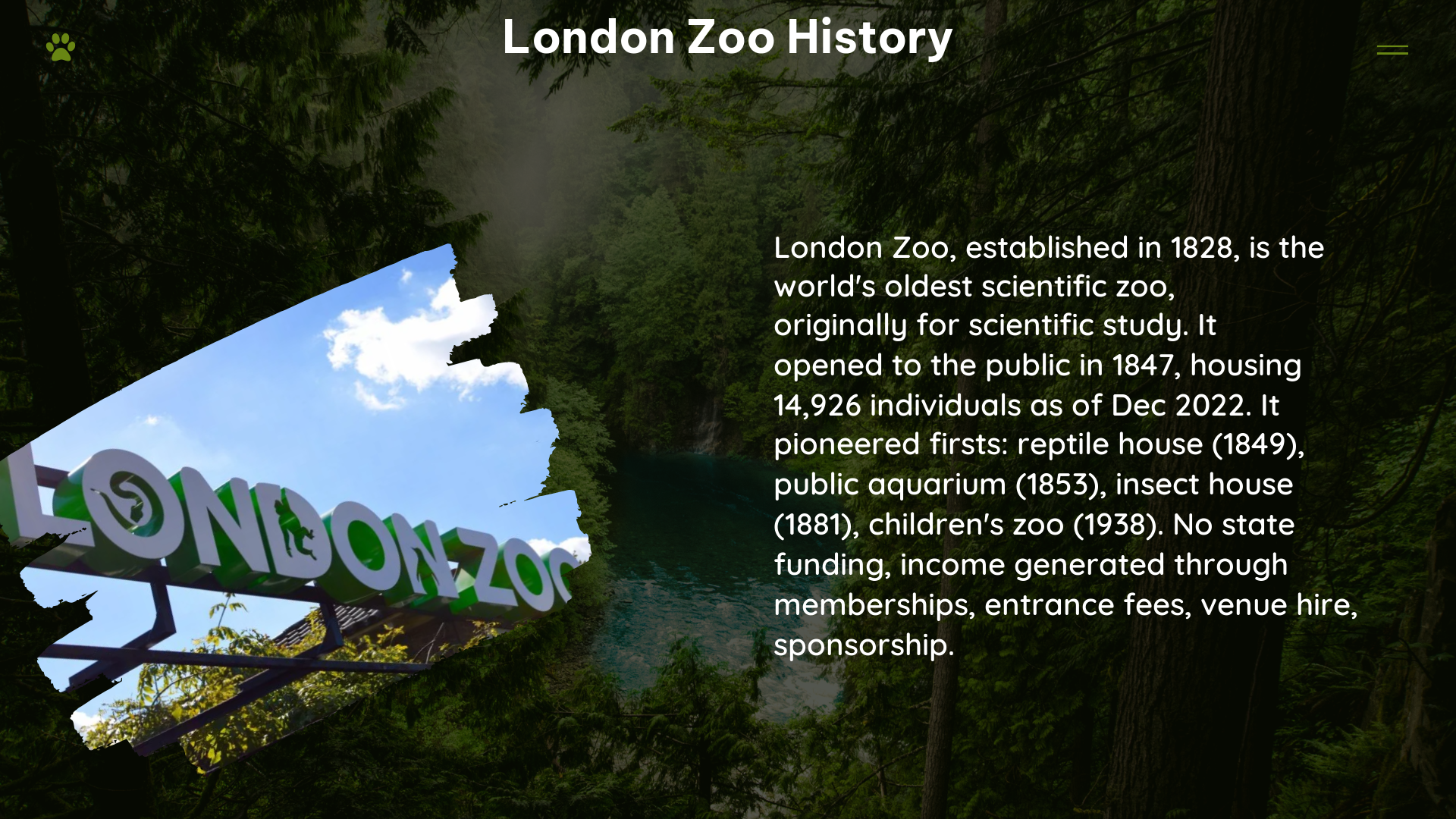London Zoo, the world’s oldest scientific zoo, has been a captivating part of London’s history since its establishment in 1826. Founded by Sir Stamford Raffles and Sir Humphry Davy, the Zoological Society of London (ZSL) obtained the land for the zoo, which was originally intended for scientific study. The animals of the Tower of London menagerie were transferred to the zoo’s collection in 1831 or 1832, and the zoo opened to the public in 1847.
The Beginnings of London Zoo
The Zoological Society of London (ZSL) was founded in 1826 with the goal of pursuing the scientific study of animals. The society obtained a 36-acre (15-hectare) plot of land at the northern edge of Regent’s Park, on the boundary line between the City of Westminster and the borough of Camden, with the Regent’s Canal running through it. This land would become the site of the world’s first scientific zoo, which officially opened on April 27, 1828.
The Expansion and Evolution of the Zoo

In the early years, the zoo was only open to fellows of the Zoological Society for scientific research purposes. However, in 1847, financial necessity led to the zoo opening to the public for the first time, without needing a written order from a Fellow. This decision proved to be a wise one, as visitor numbers quickly shot up as Londoners flocked to see the zoo’s collection.
Over the years, the zoo continued to expand and evolve, introducing a number of firsts. In 1849, it opened the first reptile house, followed by the world’s first public aquarium in 1853 and the first insect house in 1881. The zoo also popularized the name “Aquarium” and pioneered the first environments to provide the correct living conditions for salt-water animals.
Notable Moments in London Zoo’s History
London Zoo has been the site of many notable moments throughout its history. In 1836, the zoo welcomed its first giraffes, thought to be the first giraffes ever on public display in England. In 1850, the arrival of a young hippo, Obaysch, was widely acknowledged as the first living hippo in Britain since Roman times, and visitor numbers soared as a result.
One of the zoo’s most famous residents was Jumbo the elephant, who arrived in 1865 and introduced a whole new word to the English language, becoming a byword for anything rather large. Sadly, the quagga, a South African subspecies of zebra, became extinct, with the only photograph of a living quagga ever taken at London Zoo.
The Zoo Today
Today, London Zoo is home to a collection of 14,926 individuals, representing 673 species, making it one of the largest collections in the United Kingdom. In 2019, the zoo welcomed 1,078,519 annual visitors, and it continues to be a member of BIAZA, EAZA, and WAZA.
Some of the zoo’s major exhibits include Gorilla Kingdom, Animal Adventure, Blackburn Pavilion, Clore Rainforest Lookout, Into Africa, Tiger territory, Land of the Lions, and Penguin Beach. These exhibits showcase the zoo’s diverse collection of animals and provide visitors with an engaging and educational experience.
Conclusion
London Zoo’s rich history and numerous achievements make it a truly remarkable institution. From its beginnings as the world’s first scientific zoo to its current status as a leading attraction, the zoo has played a significant role in the history of London and the scientific study of animals. Whether you’re a long-time fan or a first-time visitor, the captivating history of London Zoo is sure to leave a lasting impression.
